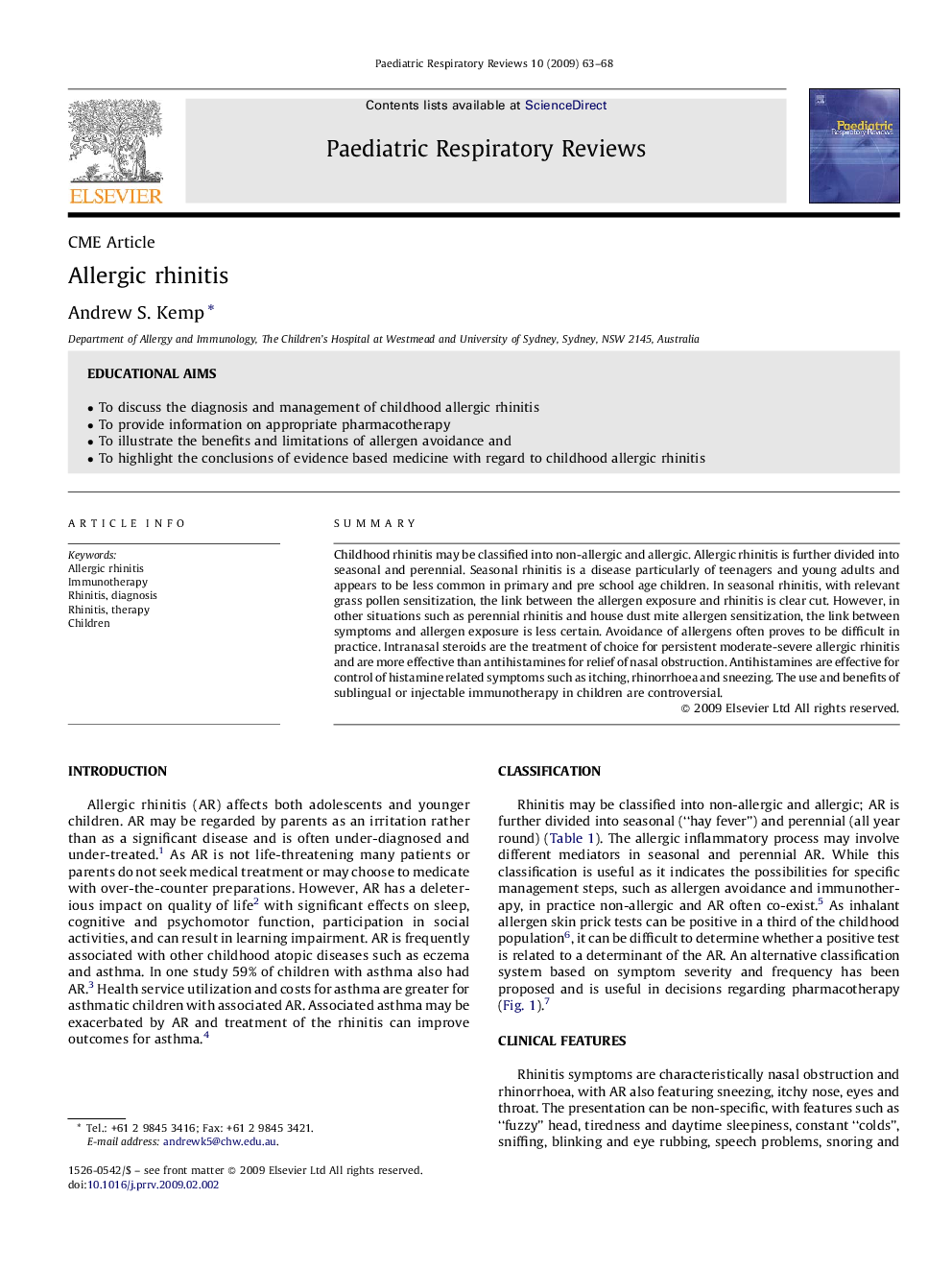| Article ID | Journal | Published Year | Pages | File Type |
|---|---|---|---|---|
| 4171596 | Paediatric Respiratory Reviews | 2009 | 6 Pages |
SummaryChildhood rhinitis may be classified into non-allergic and allergic. Allergic rhinitis is further divided into seasonal and perennial. Seasonal rhinitis is a disease particularly of teenagers and young adults and appears to be less common in primary and pre school age children. In seasonal rhinitis, with relevant grass pollen sensitization, the link between the allergen exposure and rhinitis is clear cut. However, in other situations such as perennial rhinitis and house dust mite allergen sensitization, the link between symptoms and allergen exposure is less certain. Avoidance of allergens often proves to be difficult in practice. Intranasal steroids are the treatment of choice for persistent moderate-severe allergic rhinitis and are more effective than antihistamines for relief of nasal obstruction. Antihistamines are effective for control of histamine related symptoms such as itching, rhinorrhoea and sneezing. The use and benefits of sublingual or injectable immunotherapy in children are controversial.
